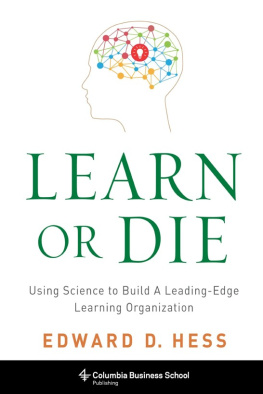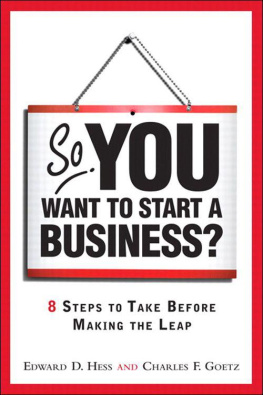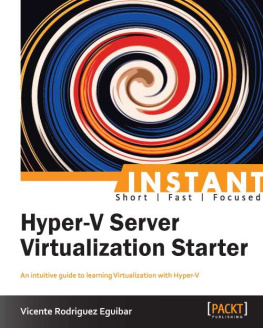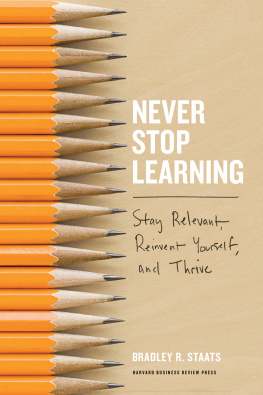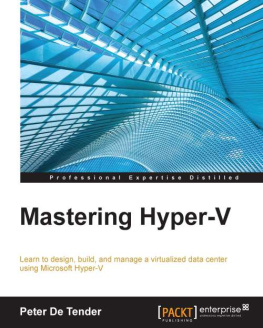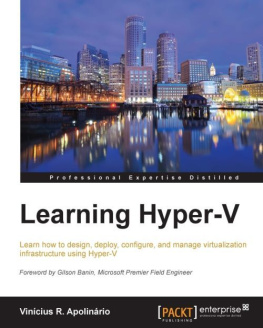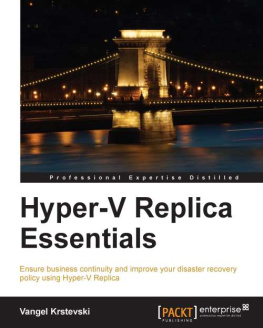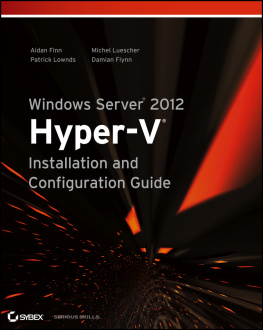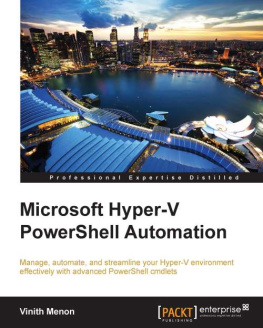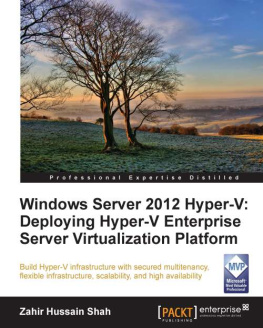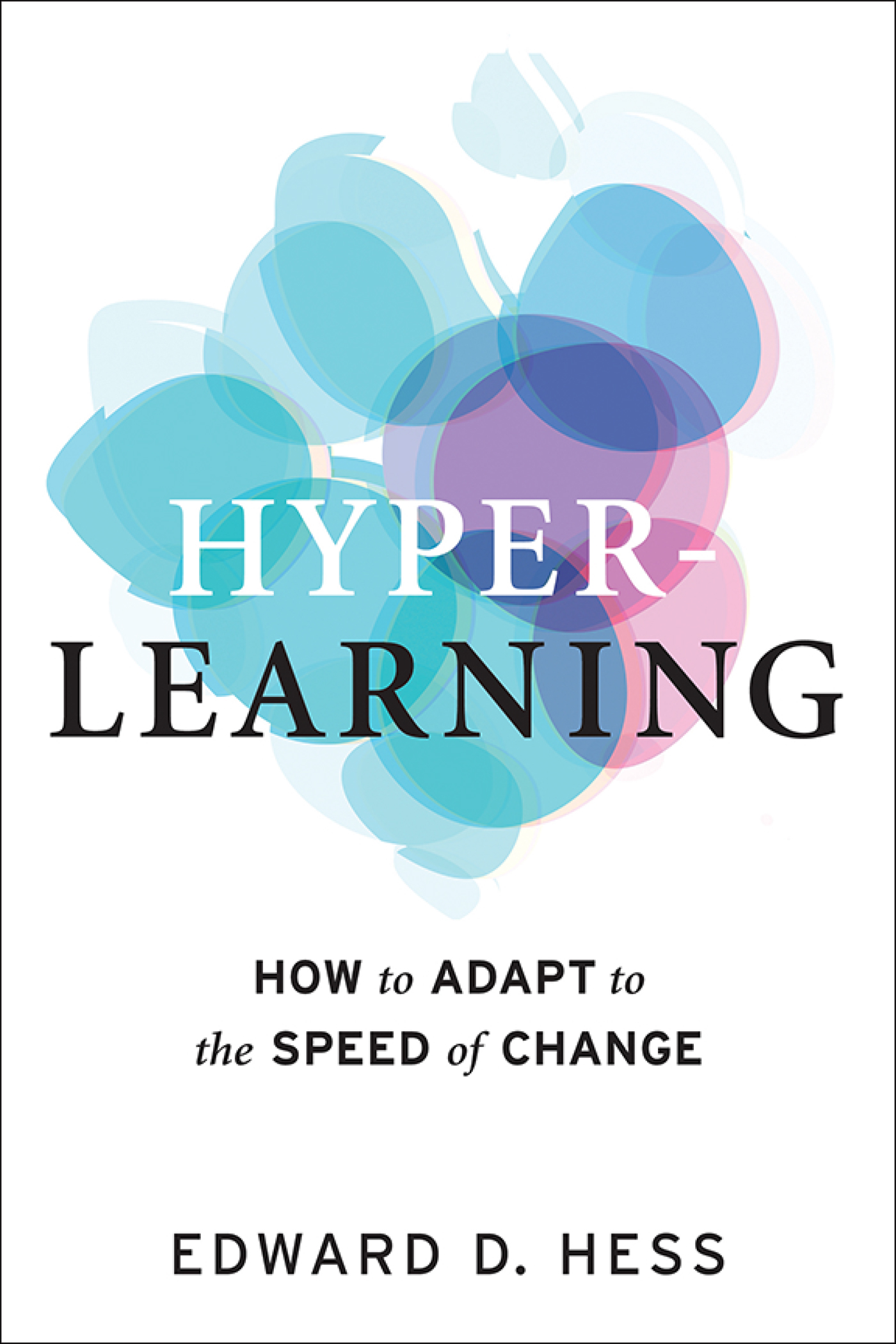Contents
Guide
Page List
HYPER-LEARNING
HYPER-LEARNING
HOWtoADAPTto theSPEEDofCHANGE
EDWARD D. HESS

Hyper-Learning
Copyright 2020 by Edward D. Hess
All rights reserved. No part of this publication may be reproduced, distributed, or transmitted in any form or by any means, including photocopying, recording, or other electronic or mechanical methods, without the prior written permission of the publisher, except in the case of brief quotations embodied in critical reviews and certain other noncommercial uses permitted by copyright law. For permission requests, write to the publisher, addressed Attention: Permissions Coordinator, at the address below.

| Berrett-Koehler Publishers, Inc.
1333 Broadway, Suite 1000
Oakland, CA 94612-1921
Tel: (510) 817-2277, Fax: (510) 817-2278
www.bkconnection.com |
Ordering information for print editions
Quantity sales. Special discounts are available on quantity purchases by corporations, associations, and others. For details, contact the Special Sales Department at the Berrett-Koehler address above.
Individual sales. Berrett-Koehler publications are available through most bookstores. They can also be ordered directly from Berrett-Koehler: Tel: (800) 929-2929; Fax: (802) 864-7626; www.bkconnection.com
Orders for college textbook/course adoption use. Please contact Berrett-Koehler: Tel: (800) 929-2929; Fax: (802) 864-7626.
Distributed to the U.S. trade and internationally by Penguin Random House Publisher Services.
Berrett-Koehler and the BK logo are registered trademarks of Berrett-Koehler Publishers, Inc.
First Edition
Hardcover print edition ISBN 978-1-5230-8924-6
PDF e-book ISBN 978-1-5230-8925-3
IDPF e-book ISBN 978-1-5230-8926-0
Digital audio ISBN 978-1-5230-8927-7
2020-1
Book producer: Westchester Publishing Services
Cover designer: Howie Severson
To Mother, Father, and Katherine
and
To youwishing you Inner Peace and
the joy of Hyper-Learning
CONTENTS
HYPER-LEARNING
PROLOGUE
How to Adapt to the Speed of Change
Why should you read this book? Because its about your future and the future of your children and grandchildren. The underlying question is: How will you and they pursue a meaningful life when smart technology takes over most of the jobs and skills that humans currently do? How will you and they keep up with the pace of technological change in order to stay relevant in the workplace?
The answer I propose is Hyper-Learning.
The word hyperlearning has been used by other people and organizations in the technology area and in the area of providing courses to students for standardized test preparation. It has also been defined in the education field as a categorical leap beyond artificial intelligence resulting from the uniting of technology trends. This book takes a different approach by creating a hyphenated word, Hyper-Learning, and defining it as the human capability to learn, unlearn, and relearn continually in order to adapt to the speed of change.
Hyper-Learning is continual learning, unlearning, and relearning.
By hyper, I do not mean the modern connotation of being excitable, manic, nervous, or fidgety.
I use the term to reference the original Greek meaning of over or above. Hyper-Learning is learning that is over and above what is typical. It is an overabundance of continual, high-quality learning.
Hyper-Learning requires a radical New Way of Being and a radical New Way of Working than youre probably used to.
This book explains why and how to become a Hyper-Learner. Before proceeding, please take out a notebook that you can use as a Learning Journal for recording thoughts, reflecting on the content, and completing included workshops while reading.
A CHALLENGING NEW ERA FOR HUMANS
Weve been in the midst of the digital age arguably since the introduction of the personal computer, but much of the populace is only now beginning to understand and predict the consequences of the relentless technological progress that characterizes this era. The continuing advance of artificial intelligence, biotechnology, nanotechnology, genetic engineering, virtual and augmented reality, quantum computing, and big data is challenging humankind on a scale analogous to the species-altering habitat migration our ancient ancestors faced. Environmental destruction forced early humans to leave the relative safety of their African rainforest habitat for the much more dangerous open savanna.
While the savannas offered new sources of food in the form of meaty animals, they also made humans less hidden and more vulnerable as prey to those often faster and bigger meaty animals.
In effect, our ancestors had to learn how to survive and thrive in a completely new environment. Our ancestors had to unlearn and relearn. And I submit to you that that is what we all have to do in the digital age, over and over again.
I believe we can continue to have meaningful work in the digital age only if we can add value by doing the tasks that technology cantdo well. At least for the near future, those tasks are exploring the unknown and novelty by being creative, imaginative, and innovative; engaging in higher-level critical thinking; making decisions in environments with lots of uncertainty and little data; and connecting with other human beings through high emotional engagement and effective collaboration.
All of those tasks are heavily influenced by the uniquely human way we approach and engage in learning. Contrary to the bits and bytes fueling smart technology, human thinking and learning are driven by a complicated and integrated interplay of our minds, brains, emotions, and bodies. How well we think, learn, and engage in the human tasks of the future depends on how well we manage and optimize whats going on with our minds, brains, and bodies for example, how well we leverage the power of our subconscious, imaginative, and creative minds and how well we connect emotionally to other humans through trusting, caring relationships.
A key human uniqueness as compared to smart machines is our emotional and social intelligence.
THE NEED TO EVOLVE
Our early ancestors survived being forced onto the open savanna by becoming hunter-gatherersnot alone but in cooperation with others. They survived by creating small teams that worked together to find food and safety and to care for offspring. They survived by sharing the bounty that individual team members found. They prospered because they collaborated, learned together, and shared resources.
Now we are on the leading edge of an era in which technology has the potential to both advance and destroy civilization. The McKinsey Global Institute predicts that by 2030 over 25 million jobs in the United States will be automated.


